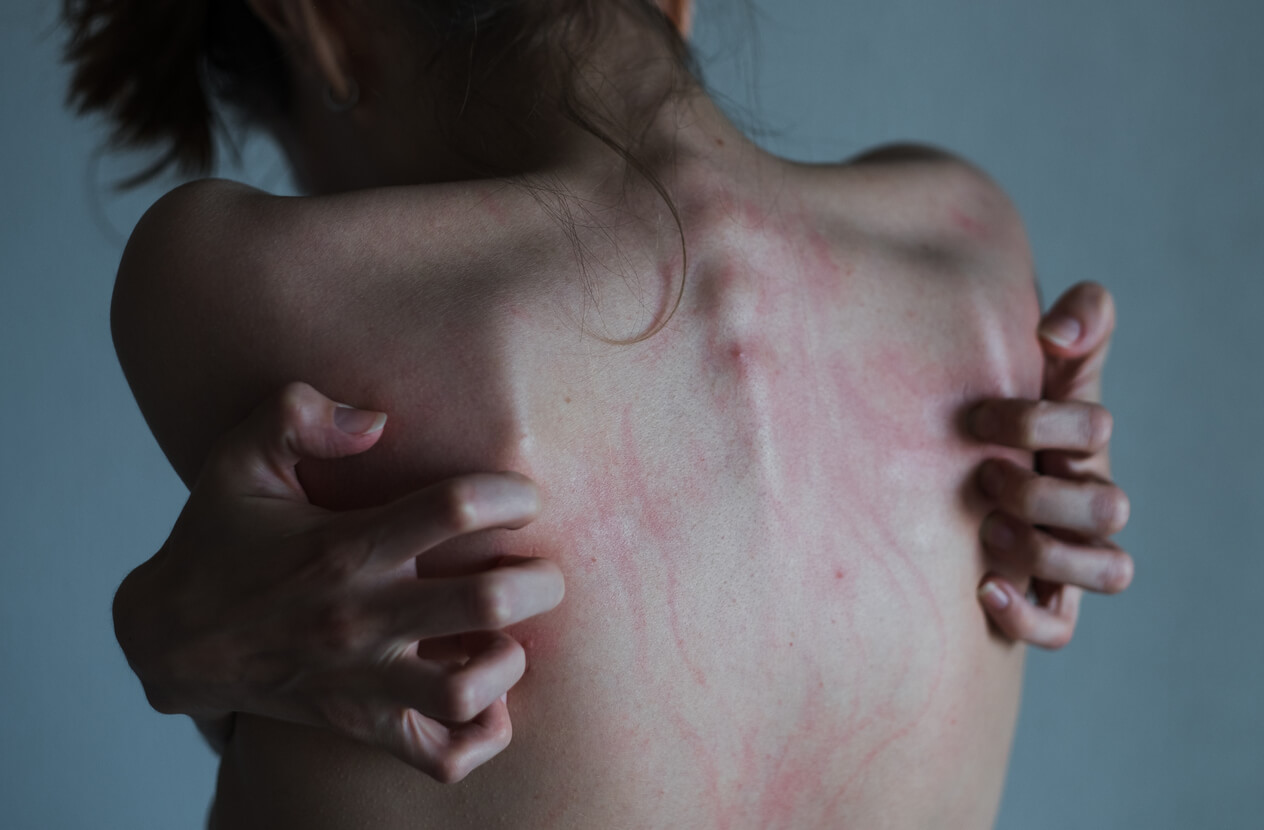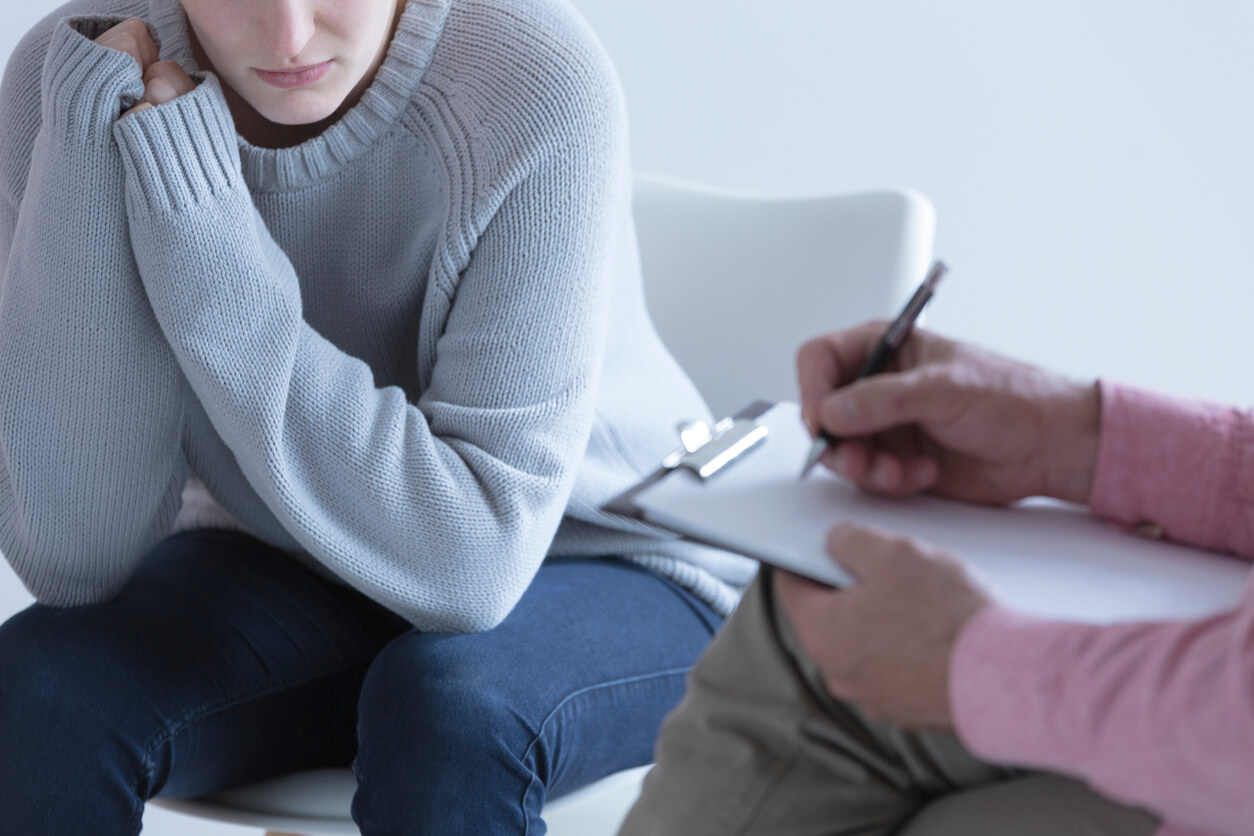Self-Injury in Adolescents: How to Help


Written and verified by the psychologist Sharon Capeluto
Self-injury in adolescents is a worldwide problem. In Europe, according to a report released by the Sant Joan de Déu Hospital in Barcelona, 27.6% of young people engage in self-injurious behavior, with a higher prevalence in females than in males. Keep reading to learn more.
During this stage of life, emotions and hormonal changes are often very intense and difficult to manage. In addition, young people may be exposed to a variety of psychological and social challenges such as family problems, school conflicts, social and academic pressure, and identity issues. Therefore, the difficulty in regulating emotions can lead adolescents to resort to self-harm in an attempt to relieve the stress they regularly live with.
The danger of self-injury in adolescents
Self-injury is behavior that involves intentionally harming one’s own body without suicidal intent. Cutting is the most common form of self-injury and involves scratching or cutting the skin with a sharp object. Repeated cutting, scratching, or pinching of the skin, burning, hair pulling, or hitting are other self-injurious behaviors practiced by many adolescents.
Why do they do it?
There are several causes that can lead an adolescent to deliberately harm themself. Some of them are the following:
- Mental health problems: Young people suffering from depression, anxiety, bipolar disorder, or borderline personality disorder are more prone to self-harm.
- High levels of stress: Emotional overload resulting from family conflicts, social pressures. or academic demands can lead adolescents to resort to self-injury. This is a way of releasing emotional intensity.
- Interpersonal conflicts: Social problems represent a significant risk factor. For example, adolescents who experience bullying, social exclusion, or abuse are more likely to engage in self-injurious behavior.

Self-injury in adolescents: How to help
Young people try to mitigate emotional distress by inflicting physical pain on themselves, which gives them a fleeting and illusory sense of calm. To help adolescents who resort to this harmful practice, here are some guidelines.
1. Seek professional help
Specialized assistance is essential when adolescents succumb to self-injury. It’s advisable to talk to the young person so that they seek and attend a psychotherapeutic space with a mental health professional. There, they can learn the causes of their behavior and start a treatment plan tailored to their needs.
2. Offer empathetic listening
Noticing that a child is hurting themself is most distressing. Worry can even lead us to have an impulsive and unempathetic reaction. However, losing our cool and getting angry with them isn’t the most advisable thing to do.
Instead, it’s best to become a compassionate listener. It’s important to be cautious when communicating with teenagers and not to lose your head when you notice that they’ve done things with which you strongly disagree. It’s essential that they feel heard and respected when talking about what they feel and think. In this regard, we must be careful and avoid making untimely judgments.
3. Help identify triggers
Remember that behind self-injury in adolescents hides a difficulty in emotional regulation. This means that there may be something going on in their life that’s completely overwhelming them.
Sometimes it’s an easily identifiable situation, but sometimes it isn’t. You can then ask them if there’s something specific that’s troubling or distressing them and make yourself available to help resolve it. Then, once they’ve recognized the main triggers, you can together think about the healthiest alternatives for dealing with it.

4. Work on your own emotional regulation
Children observe and often imitate the way in which their parents respond to stress, intense emotions, or problematic situations. Therefore, it’s essential to work on one’s own emotional regulation and acquire skills to manage anger, sadness, or frustration in a healthy and functional way.
To help, you have to seek help
The problem of self-injury in adolescents represents a complex issue that’s not solved overnight. It also tends to make parents very sensitive and generates a lot of frustration because they don’t know how to help. However, you don’t have to solve this alone. Without invading your child’s privacy or exposing them to others, seek professional help and be sure to build a trusted support network to address this situation.
Self-injury in adolescents is a worldwide problem. In Europe, according to a report released by the Sant Joan de Déu Hospital in Barcelona, 27.6% of young people engage in self-injurious behavior, with a higher prevalence in females than in males. Keep reading to learn more.
During this stage of life, emotions and hormonal changes are often very intense and difficult to manage. In addition, young people may be exposed to a variety of psychological and social challenges such as family problems, school conflicts, social and academic pressure, and identity issues. Therefore, the difficulty in regulating emotions can lead adolescents to resort to self-harm in an attempt to relieve the stress they regularly live with.
The danger of self-injury in adolescents
Self-injury is behavior that involves intentionally harming one’s own body without suicidal intent. Cutting is the most common form of self-injury and involves scratching or cutting the skin with a sharp object. Repeated cutting, scratching, or pinching of the skin, burning, hair pulling, or hitting are other self-injurious behaviors practiced by many adolescents.
Why do they do it?
There are several causes that can lead an adolescent to deliberately harm themself. Some of them are the following:
- Mental health problems: Young people suffering from depression, anxiety, bipolar disorder, or borderline personality disorder are more prone to self-harm.
- High levels of stress: Emotional overload resulting from family conflicts, social pressures. or academic demands can lead adolescents to resort to self-injury. This is a way of releasing emotional intensity.
- Interpersonal conflicts: Social problems represent a significant risk factor. For example, adolescents who experience bullying, social exclusion, or abuse are more likely to engage in self-injurious behavior.

Self-injury in adolescents: How to help
Young people try to mitigate emotional distress by inflicting physical pain on themselves, which gives them a fleeting and illusory sense of calm. To help adolescents who resort to this harmful practice, here are some guidelines.
1. Seek professional help
Specialized assistance is essential when adolescents succumb to self-injury. It’s advisable to talk to the young person so that they seek and attend a psychotherapeutic space with a mental health professional. There, they can learn the causes of their behavior and start a treatment plan tailored to their needs.
2. Offer empathetic listening
Noticing that a child is hurting themself is most distressing. Worry can even lead us to have an impulsive and unempathetic reaction. However, losing our cool and getting angry with them isn’t the most advisable thing to do.
Instead, it’s best to become a compassionate listener. It’s important to be cautious when communicating with teenagers and not to lose your head when you notice that they’ve done things with which you strongly disagree. It’s essential that they feel heard and respected when talking about what they feel and think. In this regard, we must be careful and avoid making untimely judgments.
3. Help identify triggers
Remember that behind self-injury in adolescents hides a difficulty in emotional regulation. This means that there may be something going on in their life that’s completely overwhelming them.
Sometimes it’s an easily identifiable situation, but sometimes it isn’t. You can then ask them if there’s something specific that’s troubling or distressing them and make yourself available to help resolve it. Then, once they’ve recognized the main triggers, you can together think about the healthiest alternatives for dealing with it.

4. Work on your own emotional regulation
Children observe and often imitate the way in which their parents respond to stress, intense emotions, or problematic situations. Therefore, it’s essential to work on one’s own emotional regulation and acquire skills to manage anger, sadness, or frustration in a healthy and functional way.
To help, you have to seek help
The problem of self-injury in adolescents represents a complex issue that’s not solved overnight. It also tends to make parents very sensitive and generates a lot of frustration because they don’t know how to help. However, you don’t have to solve this alone. Without invading your child’s privacy or exposing them to others, seek professional help and be sure to build a trusted support network to address this situation.
All cited sources were thoroughly reviewed by our team to ensure their quality, reliability, currency, and validity. The bibliography of this article was considered reliable and of academic or scientific accuracy.
- Flórez Correa, S. (2017). Cutting o cortes en la piel: una práctica que habla. Poiésis, 1(32), 94–100. https://doi.org/10.21501/16920945.2302
- Mollà, L., Batlle Vila, S., Treen, D., López, J., Sanz, N., Martín, L. M., … & Bulbena Vilarrasa, A. (2015). Autolesiones no suicidas en adolescentes: revisión de los tratamientos psicológicos. Revista de psicopatología y psicología clínica, 20(1), 51-61.
- Zaragozano, J. F. (2017). Autolesiones en la adolescencia: una conducta emergente. Boletín de la sociedad de pediatría de Aragón, La Rioja y Soria, 47(2), 37-45.
This text is provided for informational purposes only and does not replace consultation with a professional. If in doubt, consult your specialist.








